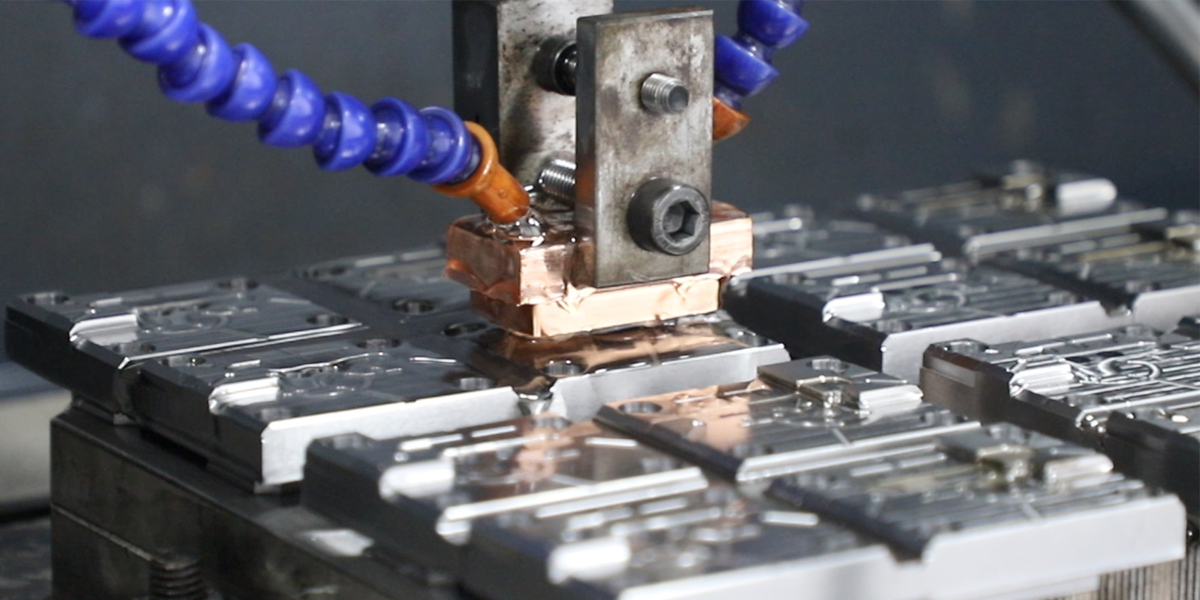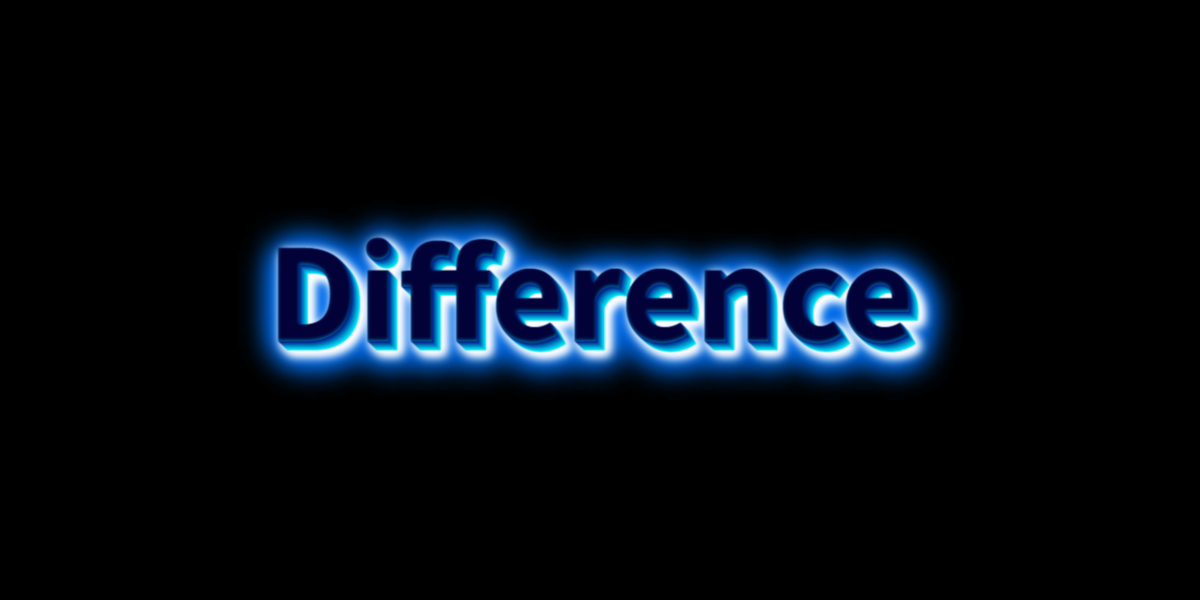What is EDM
Electrical discharge machining, or EDM, is a manufacturing process that removes material from a workpiece by computer control and using repetitive electrical discharges (or sparks). It is typically used to cut hard metals or materials that are difficult to shape with conventional techniques.

Types of EDM processing and their advantages and disadvantages
—— Sinking EDM:
Also known as die sinking or stamping EDM, this process is performed by submerging the electrode and workpiece in an insulating fluid, (oil or dielectric fluid). The electrode and the workpiece are connected to a suitable power supply. The power supply generates an electric potential between these two parts. As the electrode approaches the workpiece, the dielectric breaks down in the liquid, creating a plasma channel with small sparks popping out. These sparks occur quickly and in large numbers, each forming a small crater in the workpiece.
Advantages:
Able to produce complex shapes that are otherwise difficult to create with conventional cutting tools.
No direct contact between tool and workpiece, so delicate parts can be produced without distorting.
No residual burrs left on the workpiece.
Disadvantages:
The process is relatively slow and not suitable for large volume part production.
Can only be used with electrically conductive materials.
The tool (electrode) wears down during machining, which can affect the accuracy of the process if not managed properly.
——Wire EDM:
Also known as wire EDM or wire cutting, this method uses a thin wire as the electrode. The wire is fed continuously from a spool of wire, while deionized water is often used as a dielectric fluid to cool and flush away eroded particles. EDM machines can cut a large number of shapes, including punches, dies and stripper plates, as well as complex contours or cavities.
Advantages:
Can cut intricate and delicate shapes not possible with other cutting methods.
Can create extremely detailed and accurate cuts, with fine finishes.
Wire EDM machines can cut thick materials, providing versatility in the production of parts.
Disadvantages:
The process is slower compared to other machining processes.
Can only cut conductive materials.
Operating cost and maintenance can be higher due to the continuous use of wire and deionized water.
——Small hole EDM:
Also known as drill EDM or starter EDM, this method is used to make small or deep holes in a workpiece. It can be used to create injection nozzles on certain types of parts. The electrode for small hole EDM is usually a machined brass or copper tube that is moved vertically and precisely in a Z-shape as in a drill press while the workpiece is immersed in deionized water.
Advantages:
Capable of drilling extremely small, deep, and accurate holes.
Can be used on any electrically conductive material.
It can drill at any angle on a curved or flat surface, offering greater flexibility in drilling.
Disadvantages:
The process is slow for larger holes.
The cost can be high due to the use of brass or copper electrodes.
Like the other EDM methods, it can only be used with conductive materials.
How electrical discharge machining (EDM) works?
Preparation:
Both the workpiece and the electrode (tool) are connected to a power source, with the workpiece connected to the positive terminal and the electrode connected to the negative terminal. They are then submerged in a non-conductive liquid (oil or deionized water), which acts as a dielectric medium.
Method:
The electrodes are gradually brought closer to the workpiece. Because they are connected to a power source, an electric field is created between them.
Spark generation:
When the electric field between the electrodes and the workpiece is strong enough (i.e. when the gap is small enough), the dielectric liquid ionizes, forming a plasma channel and generating a spark that jumps across the gap. This spark generates intense heat (up to 8000-12000 degrees Celsius) that melts and evaporates a small part of the workpiece.
Corrosion and flushing:
The spark is very brief (in the microsecond range) and when it ends, the melt is expelled from the workpiece, leaving a small crater. The dielectric fluid also serves to flush away this expelled material. This process is repeated thousands of times per second.
Controlled movement:
The electrode moves along the workpiece in a predetermined path, controlled by CNC (Computer Numerical Control), creating a series of craters that form the final shape. In wire EDM, the electrode is a continuously moving metal wire used to "cut" the workpiece.
Finishing:
After EDM, the workpiece may undergo further processing to achieve the desired finish and properties, such as heat treatment or surface grinding.
EDM is highly accurate, capable of machining complex shapes and patterns, and does not create mechanical stress on the workpiece, making it suitable for machining fine or delicate parts. However, it is relatively slow and only works on electrically conductive materials.
Materials that can be machined with EDM
EDM (Electrical Discharge Machining) can machine any electrically conductive material. This includes metals such as steel, aluminum, brass, copper, and titanium, as well as superalloys, composites, and certain conductive ceramics or polymers.
Steel:
Both carbon and stainless steels can be machined with EDM. These materials are commonly used to produce molds, impressions and other precision parts.
Aluminum:
Aluminum, due to its good electrical conductivity, is a popular choice for EDM.
Titanium:
Titanium and its alloys, which are often difficult to machine by conventional methods due to their hardness and tendency to react with tools at high temperatures, can be effectively machined by EDM.
Superalloys:
Superalloys, such as Inconel and Hastelloy, are materials designed to withstand extreme conditions and high temperatures.
Tungsten Carbide:
Tungsten carbide is a very hard material used to make cutting tools, drills and dies. EDM is the preferred method for machining this material, as conventional machining can cause tool wear and breakage.
Copper:
Copper and its alloys, such as brass and bronze, can also be machined by EDM. Copper is often used as an electrode in the EDM process because of its good electrical conductivity.
Conductive Ceramics and Composites:
Some advanced ceramics and composites with conductive properties can also be machined with EDM.
Each of these materials has unique properties such as hardness, electrical conductivity, heat resistance and corrosion resistance that make them useful in different applications. The great advantage of EDM is its ability to machine complex shapes and hard materials without causing mechanical stress or distortion, regardless of the hardness of the material.

Differences between EDM and other CNC machining
Contactless Machining:
Unlike most CNC machining processes, which use cutting tools to directly contact the workpiece to remove material. The difference is that EDM does not involve physical contact between the tool (electrode) and the workpiece; it uses a series of electrical discharges (sparks) to erode the material.
Material limitations:
EDM can only be used on electrically conductive materials, while other CNC machining methods can be used on a much wider range of materials.
Complex shapes and hard materials:
EDM is well suited for machining complex shapes and hard materials that would be difficult to machine using traditional machining processes. For example, EDM machines can be used to cut complex shapes and thin-walled structures without distortion.
Surface Finishing:
EDM can achieve very fine surface finishes, making it ideal for certain precision applications.
No mechanical forces:
Because EDM does not rely on mechanical forces to remove material, it is the best choice for machining delicate parts that could be damaged by other machining methods.
Tool wear:
Tool wear can be a significant problem in other CNC machining processes, requiring regular tool replacement. Electrode wear is also present in EDM, but it can be controlled and managed to obtain consistent results.
Contact us to for your more questions.